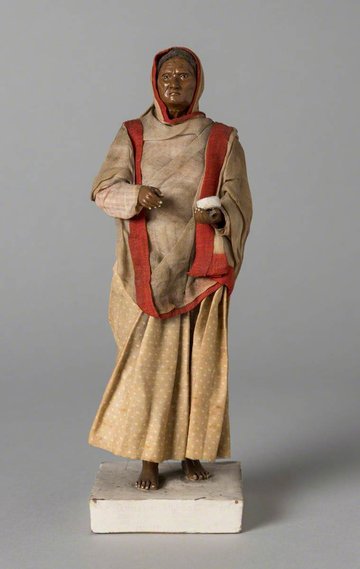
Ayahs
Nursemaids, maidservants and carers
About
South Asian travelling ayahs travelled across the British empire. When they travelled to Britain, a majority of them landed in London but there are archival traces of their presence across Britain including, but not limited to, Sheffield, Manchester, Liverpool and Belfast. We cannot pinpoint a specific start date for when travelling ayahs began travelling to Britain. However, the earliest archival records show that the profession existed as early as 1730.
Most of the travelling ayahs ranged between the ages of 20 and 40, their marital status registered as ‘single’ or ‘widowed’. They offered valuable care labour to travelling families and sometimes chaperoned children when they travelled without their families. A sweeping majority of the employers were European families travelling to Britain on ‘home leave’. The journey between South Asia and Britain took 6–7 months before the opening of the Suez Canal. After 1869 the travel time reduced significantly to 20–30 days, but the challenges of sea travel remained. Some travelling ayahs did this long and hard journey fifty or more times. Anthony Pereira was an exemplary travelling ayah who travelled fifty-four times between India and Britain and was a well-experienced travelling ayah on that route.
While caring for the families and charges, travelling ayahs often introduced them to curries, recipes and cures which became part of British households long after the travelling ayahs returned home. While most travelling ayahs went back home, sometimes travelling ayahs stayed in Britain and served their employers, eventually creating a new life for themselves in Britain.
One of the biggest challenges for the travelling ayahs in Britain was to find a way back home. Upon disembarking in Britain, they had to wait for their return trip to South Asia. Many found themselves destitute in Britain as their employers fraudulently denied them wages or return passages that they had agreed to pay for at the time of sailing from South Asia. Often, destitute ayahs ended up being housed in the Ayahs' Home (there were several Ayahs' Homes across Britain but the one in King Edward’s Road rose to prominence) while they waited to find means to travel back home. The Ayahs’ Homes provided accommodation for transient travelling ayahs in return for payment and also functioned as a brokerage through which travelling ayahs were frequently connected to interested employers. While the Home sometimes presented itself as an institution doing charitable work, it was not a charity. The Home housed both destitute travelling ayahs and those who had resources to pay for their lodgings. Destitute travelling ayahs, however, would have to pay the Ayahs’ Home for their lodgings once the Home arranged employment for them and they received an advance. The Home therefore took in destitute travelling ayahs as well as those who possessed a paid return ticket but had decided to stay temporarily in Britain to look for employers they could serve and thus earn additional wages.
There is no exact date when the practice of taking ayahs to Britain ended but the traffic significantly reduced during the Second World War and stopped with India’s independence. However, it may be argued that such employments and travels have been renewed through different migration schemes in the contemporary world.
The complete life histories of South Asian travelling ayahs are usually hard to find in the historical records of the imperial state and families who employed them. Yet, for those invested in their stories, we can piece together the scattered sources to bring to light these extraordinary women’s fleeting voices, which reveal elements of their identities, experiences and influence on British cultures and homes.
Chakraborty, Satyasikha, ‘“Nurses of Our Ocean Highways”: The Precarious Metropolitan Lives of Colonial South Asian Ayahs’, Journal of Women's History 32.2 (2020), pp. 37–64
Datta, Arunima, ‘Becoming Visible: Travel Documents and Travelling Ayahs in the British Empire’, South Asian Studies 38.2 (2022), pp. 141–60
Datta, Arunima, Waiting on Empire: A History of Indian Travelling Ayahs in Britain (Oxford: Oxford University Press, 2023)
Robinson, Olivia, ‘Travelling Ayahs of the Nineteenth and Twentieth Centuries: Global Networks and Mobilization of Agency’, History Workshop Journal 86 (2018), pp. 44–66
Visram, Rozina, Ayahs, Lascars and Princes: The Story of Indians in Britain 1700–1947 (London: Pluto Press, 1986)
British Library, St Pancras
National Archives, Kew, UK
National Archives of India, Delhi
West Bengal State Archives, Kolkata
For image and copyright details, please click "More Information" in the Viewer.
Image credit
'Ayah' by Rakhal Chunder Pal (1834–1911) for 1886 Colonial and Indian Exhibition
Elgin Museum, https://creativecommons.org/licenses/by-nc/4.0/
Entry credit
Arunima Datta
